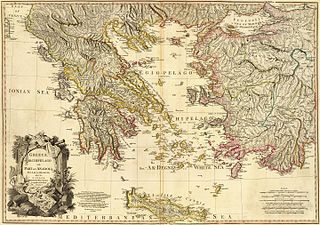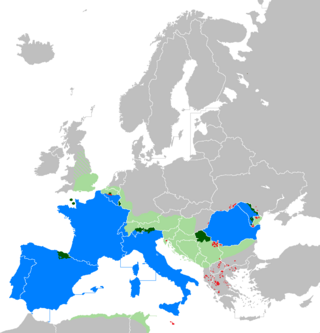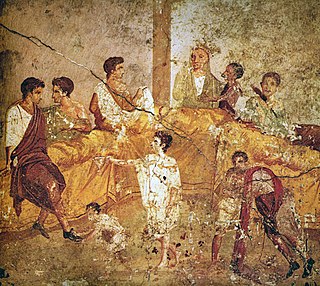Related Research Articles
Latin is an Italic language, originally spoken in ancient Rome and its empire.

Western Christianity is one of two subdivisions of Christianity. Western Christianity is composed of the Latin Church and Western Protestantism, together with their offshoots such as the Old Catholic Church, Independent Catholicism and Restorationism.

Eastern Christianity comprises Christian traditions and church families that originally developed during classical and late antiquity in the Eastern Mediterranean region or locations further east, south or north. The term does not describe a single communion or religious denomination. Eastern Christianity is a category distinguished from Western Christianity, which is composed of those Christian traditions and churches that originally developed further west.
The term Latins has been used throughout history to refer to various peoples, ethnicities and religious groups using Latin or the Latin-derived Romance languages, as part of the legacy of the Roman Empire. In the Ancient World, it referred to the people of ancient Latium, including the Romans. Following the spread of Christianity, it came to indicate the Catholics of the Latin Church, especially those following Western liturgical rites. Currently, it defines the peoples using the Romance languages in Europe and the Americas.

The Eastern Catholic Churches or Oriental Catholic Churches, also called the Eastern-Rite Catholic Churches, Eastern Rite Catholicism, or simply the Eastern Churches, are 23 Eastern Christian autonomous particular churches of the Catholic Church in full communion with the pope in Rome. Although they are distinct theologically, liturgically, and historically from the Latin Church, they are all in full communion with it and with each other. Eastern Catholics are a minority within the Catholic Church; of the 1.3 billion Catholics in communion with the pope, approximately 18 million are members of the eastern churches. The largest numbers of Eastern Catholics are found in Eastern Europe, Eastern Africa, the Middle East, and India. As of 2022, the Syro-Malabar Church is the largest Eastern Catholic Church, followed by the Ukrainian Greek Catholic Church.
Greeks had settled in Southern Italy and Sicily since the 8th century BC. In this way, Italian tribes came into contact with Greek culture very early on and were influenced by it. The alphabet, weights and measures, and temples were derived from the Greeks.

An exarch was the holder of any of various historical offices, some of them being political or military and others being ecclesiastical.
Greek Orthodox Church is a term that can refer to any one of three classes of Christian churches, each associated in some way with Greek Christianity, Levantine Arabic-speaking Christians or more broadly the rite used in the Eastern Roman Empire.

Rūm, also romanized as Roum, is a derivative of Parthian (frwm) terms, ultimately derived from Greek Ῥωμαῖοι. Both terms are endonyms of the pre-Islamic inhabitants of Anatolia, the Middle East and the Balkans and date to when those regions were parts of the Eastern Roman Empire.

In ecclesiology, the Christian Church is what different Christian denominations conceive of as being the true body of Christians or the original institution established by Jesus Christ. "Christian Church" has also been used in academia as a synonym for Christianity, despite the fact that it is composed of multiple churches or denominations, many of which hold a doctrinal claim of being the one true church to the exclusion of the others.

The continuation, succession, and revival of the Roman Empire is a running theme of the history of Europe and the Mediterranean Basin. It reflects the lasting memories of power, prestige, and unity associated with the Roman Empire.

The Greeks have been identified by many ethnonyms. The most common native ethnonym is Hellene, pl. Hellenes (Ἕλληνες); the name Greeks was used by the ancient Romans and gradually entered the European languages through its use in Latin. The mythological patriarch Hellen is the named progenitor of the Greek peoples; his descendants the Aeolians, Dorians, Achaeans and Ionians correspond to the main Greek tribes and to the main dialects spoken in Greece and Asia Minor (Anatolia).
Byzantinism, or Byzantism, is the political system and culture of the Byzantine Empire, and its spiritual successors the Orthodox Christian Balkan countries of Greece and Bulgaria especially, and to a lesser extent Serbia and some other Orthodox countries in Eastern Europe like Belarus, Georgia, Russia and Ukraine. The term Byzantinism itself was coined in the 19th century. The term has primarily negative associations, implying complexity and autocracy.

The Byzantine Greeks were the Greek-speaking Eastern Romans throughout Late Antiquity and the Middle Ages. They were the main inhabitants of the lands of the Byzantine Empire, of Constantinople and Asia Minor, the Greek islands, Cyprus, and portions of the southern Balkans, and formed large minorities, or pluralities, in the coastal urban centres of the Levant and northern Egypt. Throughout their history, the Byzantine Greeks self-identified as Romans, but are referred to as "Byzantine Greeks" in modern historiography. Latin speakers identified them simply as Greeks or with the term Romaei.
Greek EastandLatin West are terms used to distinguish between the two parts of the Greco-Roman world and of medieval Christendom, specifically the eastern regions where Greek was the lingua franca and the western parts where Latin filled this role.

The Western world, also known as the West, primarily refers to various nations and states in the regions of Western Europe, Northern America, and Australasia; with some debate as to whether those in Eastern Europe and Latin America also constitute the West. The Western world likewise is called the Occident in contrast to the Eastern world known as the Orient. The West is considered an evolving concept; made up of cultural, political, and economic synergy among diverse groups of people, and not a rigid region with fixed borders and members. Definitions of "Western world" vary according to context and perspectives.

The legacy of the Roman Empire has been varied and significant. The Roman Empire, built upon the legacy of other cultures, has had long-lasting influence with broad geographical reach on a great range of cultural aspects, including state institutions, law, values, religious beliefs, technological advances, engineering and language.
In the year before the Council of Constantinople in 381, Christianity became the official religion of the Roman Empire when Emperor Theodosius I issued the Edict of Thessalonica in 380, which recognized the catholic orthodoxy of Nicene Christians as the Roman Empire's state religion. Historians refer to the Nicene church associated with emperors in a variety of ways: as the catholic church, the orthodox church, the imperial church, the Roman church, or the Byzantine church, although some of those terms are also used for wider communions extending outside the Roman Empire. The Eastern Orthodox Church, Oriental Orthodoxy, and the Catholic Church all claim to stand in continuity from the Nicene church to which Theodosius granted recognition.

The Roman people was the body of Roman citizens (Latin: Rōmānī; Ancient Greek: Ῥωμαῖοι Rhōmaîoi) during the Roman Kingdom, the Roman Republic, and the Roman Empire. This concept underwent considerable changes throughout the long history of the Roman civilisation, as its borders expanded and contracted. Originally only including the Latins of Rome itself, Roman citizenship was extended to the rest of the Italic peoples by the 1st century BC and to nearly every subject of the Roman empire in late antiquity. At their peak, the Romans ruled large parts of Europe, the Near East, and North Africa through conquests made during the Roman Republic and the subsequent Roman Empire. Although defined primarily as a citizenship, "Roman-ness" has also and variously been described as a cultural identity, a nationality, or a multi-ethnicity that eventually encompassed a vast regional diversity.

Catholic–Eastern Orthodox relations have warmed over the last century, as both churches embrace a dialogue of charity. The Second Vatican Council (1962–1965) ushered in a new era of relations for the Roman Church towards the Orthodox Church, fondly describing the Orthodox as “separated brethren” with valid sacraments and an apostolic priesthood. The Orthodox Church, on the other hand, encouraged local churches to prepare for future dialogue in the Third Pan-Orthodox Conference in Rhodes (1964), and has since engaged in several ecumenical efforts with the Vatican. Significantly, in 1965 Pope Paul VI and Ecumenical Patriarch Athenagoras I of Constantinople jointly lifted the mutual excommunications of 1054. More recently, in November 2019, the current Patriarch of Constantinople, Patriarch Bartholomew, has stated he believes Orthodox re-union with the Catholic Church is inevitable.
References
- 1 2 3 "Distinguishing the terms: Latins and Romans". Orbis Latinus . Archived from the original on 2018-07-09.
- ↑ "Why So Many Rites in the Church | EWTN". EWTN Global Catholic Television Network. Retrieved 2024-03-08.
- ↑ Ostrogorski, Georgije (1969). History of the Byzantine State . Rutgers University Press. ISBN 0813511984.
- ↑ "Invectiva contra eum qui maledixit Italiam - Wikisource". la.wikisource.org (in Latin). Retrieved 2022-09-11.




